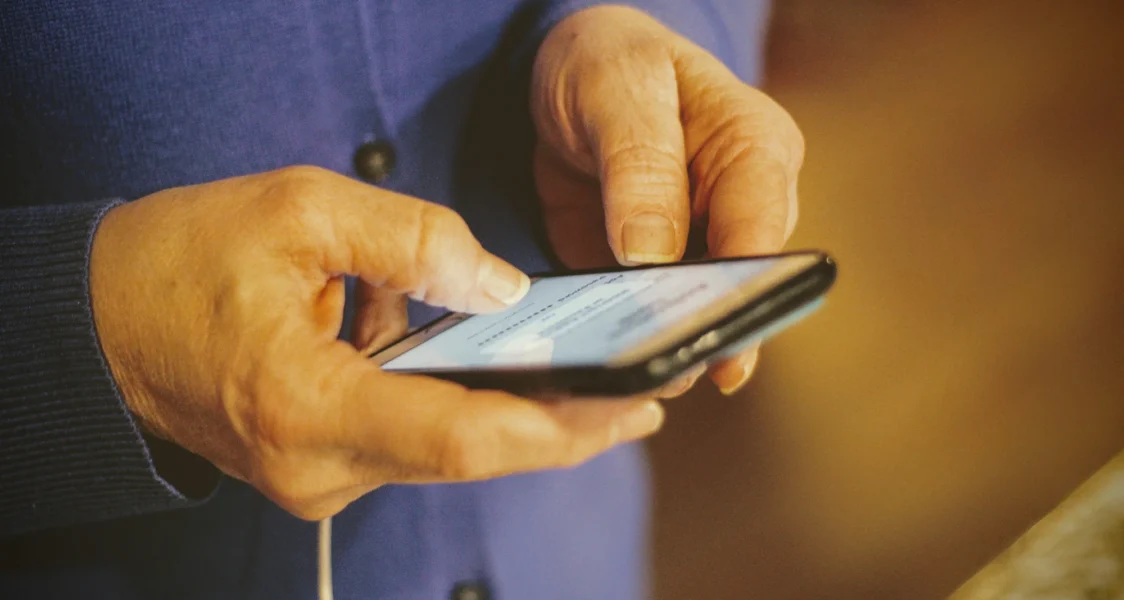Best Phones for the Hearing Impaired in 2023
In an age where mobile phones are an essential part of daily life, the hearing impaired face unique challenges. The right phone can bridge the communication gap and help foster connection and independence. This guide, crafted by Koelsch Communities, aims to help you find the best phones tailored for the hearing impaired, aligning with our mission of creating happiness by providing the finest living experiences anywhere. We understand the importance of staying connected, and we're here to help you make the best choice.

What to Look For in a Phone for the Hearing Impaired
Hearing Aid Compatibility
Make sure the phone is compatible with hearing aids to avoid feedback or static during calls. This is vital for those who are hearing impaired, as it allows seamless communication with loved ones. Many modern phones offer this feature, but you should always check the specifications.
Ringer Volume
Adjustable volume is essential. It ensures that the phone’s ring can be heard clearly, even by those with significant hearing loss. Look for phones with customizable volume settings to suit individual needs.
Visual Indicators
Flashing lights for incoming calls can be a helpful feature, providing a visual cue that complements auditory signals. This is especially useful for those who may not hear the ring but can see the visual alert.
Audio Clarity
The clarity of the sound is as important as volume. Look for phones with high-quality speakers that provide crisp, clear audio. Some phones offer noise cancellation features to minimize background noise.
Advanced Features
Technologies like voice slowing and on-screen captions can make communication easier. These features can be particularly helpful for understanding fast talkers or those with accents. Learn more about these features here.
Best Home and Office Phones for the Hearing Impaired:
Panasonic KX-TGM450S
With amplified sound and slow talk control, this phone is designed for the hearing impaired. It’s a great option for seniors who value clear communication. The large buttons and bright display make it user-friendly.
Hamilton CapTel 2400i
Offering real-time captions, this phone translates speech into text, making it easier to understand conversations. It’s perfect for those who may struggle with understanding speech alone.
VTech SN5147
With large buttons and a visual ringing indicator, this phone is user-friendly for those with hearing impairment. The loud speaker ensures that calls are heard clearly. You can find more details about this phone here.
Best Cell Phones for the Hearing Impaired:
Jitterbug Smart2
Designed with seniors in mind, this phone offers loud and clear sound, large buttons, and a simple interface. The 5Star Urgent Response button provides added safety.
iPhone
With accessibility features like Live Listen, iPhones can be a great option for the hearing impaired. The compatibility with various hearing aids and the ability to customize settings make it a versatile choice.
Essential Features for Cell Phones
- A loud speaker makes listening easier. Look for phones with adjustable volume controls.
- A large and bright display encourages communication through text. A clear display helps in reading texts and using apps.
- A long-lasting battery provides reliability. A phone that lasts all day gives peace of mind.
- Durable construction increases longevity. Look for phones with robust build quality.
- GPS capability is an important safety feature for seniors who may need location assistance.
Why You Should Consider a Trial Period
Testing a phone before committing allows you to make sure it meets your specific needs. Many manufacturers offer trial periods, so don’t hesitate to ask for a trial to make sure the phone is the right fit.
Accessories and Additional Tools for the Hearing Impaired
- Amplifiers are devices that can increase the volume. These can be added to existing phones to enhance sound.
- Bluetooth streamers allow connection with hearing aids, which can provide a more personalized listening experience.
- Vibrating alerts offer an alternative to auditory signals. These can be used for alarms and notifications.
Common Challenges and Solutions
Understanding Voices
Understanding voices on a phone call can be difficult for the hearing impaired. Here are some tips on adjusting settings to enhance voice clarity:
- Adjust the Tone Control: Many phones for the hearing impaired come with adjustable tone control. This allows you to boost the frequencies that you hear best, making voices clearer.
- Use Voice Clarity Enhancement Features: Some phones have specific features designed to enhance voice clarity. Refer to the phone’s manual to see if this option is available and how to activate it.
- Utilize Hearing Aid Compatibility: If you use hearing aids, ensure that the phone’s hearing aid compatibility is activated. This can create a more direct connection between the hearing aid and the phone, reducing interference and enhancing clarity.
- Experiment with Volume Levels: Sometimes, increasing the volume too much can distort sound. Experiment with different volume levels to find the one that provides the best clarity without distortion.
- Consider Using Headphones or Earbuds: Sometimes, using headphones or earbuds that are designed for the hearing impaired can provide a more personalized listening experience. Look for ones that are compatible with hearing aids if you use them.
These tips can make a significant difference in understanding voices during phone calls. Always refer to the specific phone’s manual or consult with a professional for personalized guidance based on the phone model and individual hearing needs.
Handling Background Noise
Background noise can be a significant challenge for the hearing impaired, especially when using a phone. The presence of ambient sounds, such as traffic, chatter, or music, can make it difficult to hear the person on the other end of the line. Here’s how to handle this challenge:
- Noise Cancellation Features: Many modern phones come with noise cancellation technology that filters out background noise, allowing the user to hear the conversation more clearly. This technology uses advanced algorithms to distinguish between the voice of the speaker and ambient noise.
- Use of Headphones: Sometimes, using headphones specifically designed for the hearing impaired can provide a more isolated and clear sound experience. These headphones can be connected to the phone and tailored to the user’s hearing needs.
- Adjusting Settings: Some phones allow users to adjust the audio settings, enhancing the frequencies that the user hears best. This personalized approach can make a significant difference in minimizing the impact of background noise.
- Utilizing Text Communication: In extremely noisy environments, switching to text communication might be a practical solution. Many phones offer voice-to-text features that can transcribe a conversation in real time.
Reading Small Text
Reading small text on a phone can be a struggle for many, especially for older adults or those with vision impairments. Here’s how to overcome this challenge:
- Zoom Features: Most smartphones come with the ability to zoom in on text. This can be done by using a simple pinch-and-zoom gesture on the screen or by accessing the accessibility settings to enable a permanent zoom feature.
- Font Adjustment: Many phones allow users to change the font size and style. By increasing the font size, users can make the text more readable. This can usually be found in the display or accessibility settings of the phone.
- High Contrast Mode: Some individuals may benefit from changing the contrast settings on their phone. High contrast can make the text stand out more against the background, making it easier to read.
- Screen Readers: For those who find reading on a screen particularly challenging, screen readers can be a valuable tool. These programs read the text aloud, allowing the user to listen rather than read.
- Utilizing Voice Commands: Voice commands can be used to navigate the phone, send messages, or make calls without having to read small text on the screen.
By understanding these common challenges and knowing how to address them, users can make their phone experience more accessible and enjoyable. Whether it’s handling background noise or reading small text, there are solutions available that can make a significant difference in the usability of a phone for the hearing impaired.
Summary
Choosing the right phone for the hearing impaired is an important decision, with major ramifications for quality of life. By considering the features outlined above, you can find a phone that supports and enhances communication and independence. Remember, the best phone is the one that fits your unique needs and lifestyle.
Company Information
At Koelsch Communities, we’ve been providing community-focused, mom-approved care since 1958. Our commitment to crafting an environment where your loved ones thrive extends to helping you make informed decisions about technology. If you’re seeking more information on phones for the hearing impaired, contact us today. We’re there in this moment and every moment, hearing the difference, and ready to assist you with the special attention you need.
This article was created to provide valuable information to older adults and their families. If you found this guide helpful, explore more resources on our resources page.
Disclaimer: This article is for informational purposes only and does not constitute medical, legal, or financial advice. It’s recommended to consult with a medical, legal, or financial professional for your specific circumstances.









